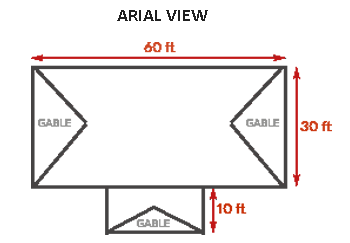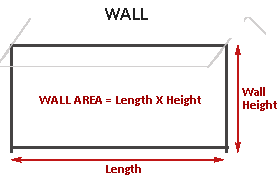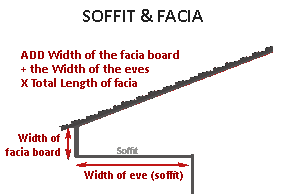Measure the Square Feet of Area to Coat
Coverage for Liquid Vinyl IS NOT the same as paint. LVS products are very thick and it will take more gallons to coat the same area as conventional paint products. To determine the amount of coating that will be needed for your project you must first calculate the square feet of area that you intend to cover. It can be aggravating to find out when you are almost done that there is not enough coating to finish. You will want to oder enough material to complete the project without wasting money by purchasing more than what is needed. When multiple colors are being used, the area for each color should be measured separately. For example if there is a total of 1,500 square feet being covered consisting of white walls and brown trim, then the measurement of the trim should be separated from the wall area measurement and one would order white LVS for the lighter color wall area and deep LVS for the darker colored trim. Your measurements do not need to be exact but should be reasonably close. Any coating that may be left over can be stored for future use. Liquid Vinyl Siding has a long shelf life.
Drawing a simple Arial View Diagram of the house (as if looking down from the sky) can help to visualize areas and ensure all surfaces area is accounted for.
1. WALL MEASUREMENT
Measure the length of each wall and then multiply it by its height (from the bottom of the wall to the
bottom of the eaves). For a quick measurement the length can be stepped off (each step being
approximately 3 feet). Do not deduct space occupied by window and door openings. This will allot extra
material that may be needed for an area that may have been under-measured or missed and for any overspray
or spillage. Add the measurements to determine the total Wall Area.
2. GABLE AREA
Measure the width of the gable (length from end to end) and then estimate its height from the top of the wall
to its peak. Multiply the width times the height and then divide by 2 to calculate the square foot area.
Add the gable measurements together.
3. SOFFIT & FACIA/OVERHANG or EVES
Measuring the linear feet (running feet) of facia boards around the house. Next measure the width of the
facia board and length of the overhang (soffit). Add together the facia width and soffit length and then multiply
by the total linear feet of facia boards measured. This calculates the total area of the overhang. Many homes have
a 6‑inch wide facia board and an 18‑inch overhang that equals 2 feet when added together. If this is
true on your home simply doubling the mesurement of facia board length is a fast way to estimate the overhang area.
Add together the square feet of the overhang measured.
4. OTHER AREAS
Measure other areas such as porch ceilings (length X width),
columns (circumference X height),
railing (length X height),
garage doors (width X height) and
ceiling areas (width X height). Don't forget to measure
out buildings and other areas you intend to coat.
Gallons of coating needed
for project
WALL AREA (total sq. ft.)
GABLE AREA (sq. ft.)
SOFFIT/OVERHANG (sq. ft.)
Other areas measured
Total square feet entered
Gallons
Gallons





